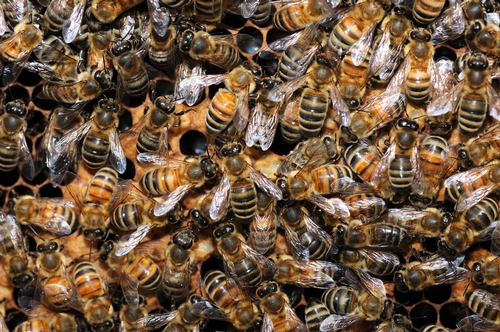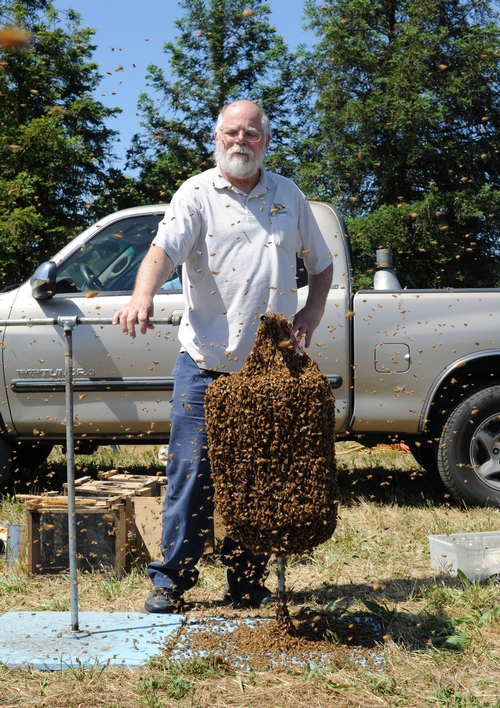- Author: Kathy Keatley Garvey
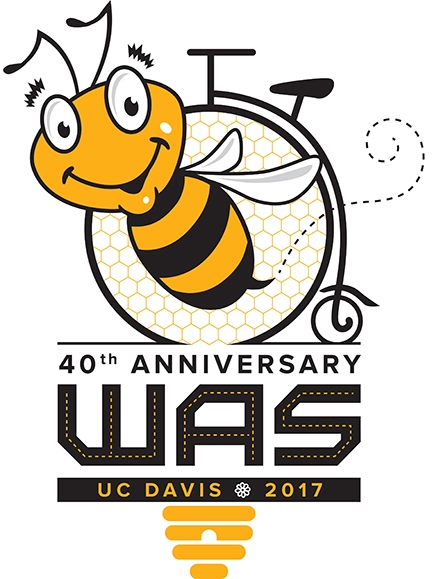
The Western Apicultural Society, headed by president Eric Mussen of UC Davis, Extension apiculturist emeritus, wanted a unique bee T-shirt design for its 40th anniversary conference, set Sept. 5-8 at UC Davis.
"We wanted a design depicting a honey bee riding a penny farthing or high wheel bicycle," Mussen said, noting that Davis has been described as the "Bicycle Capital of the United States" (due to the city's "high rate of bicycle use and its long history providing its thousands of pedalers with a cyclist-friendly environment"--David Takemoto-Weerts).
"We wanted something cartoonish," added Mussen, who is serving his sixth term as president. WAS was founded at UC Davis by Norm Gary, Mussen and Becky Westerdahl. Gary, now professor emeritus, UC Davis Department of Entomology and Nematology, spearheaded the founding.
Eric Mussen knows bees. He retired in 2014 after 38 years of service, culminating a career that drew national and international attention.
Mussen selected UC Davis graphic artist Steve Dana, a veteran artist who appreciates bees.

Dana, a 1987 graduate of California Polytechnic Institute (Cal Poly), has worked at UC Davis and the UC Davis Medical Center as a graphic designer and illustrator for more than 25 years. A lifelong resident of Dixon, he also has a freelance graphic design and illustration business that he's owned since 1990.
"I grew up on a farm just east of Dixon, and rode motorcycles and sketched cartoons whenever possible, always wishing that I could be as good as my older brother, Jim," Steve recalled.
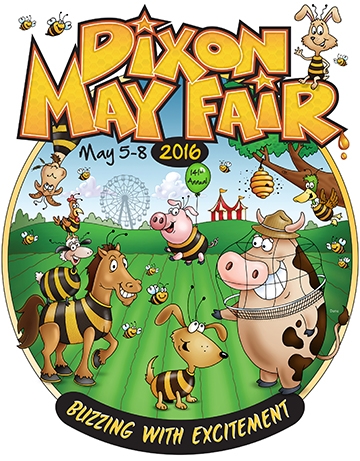
Steve said his parents both enjoyed various forms of art from acrylic painting to metal sculpture and his nephew Sutton Betti is a professional sculptor in Colorado.
No stranger to bees, Steve created the popular logo for the Dixon May Fair's 2016 theme, "Buzzing with Excitement." He considers it "my favorite" of the seven posters he's generated for the fair.
Mussen predicts the WAS t-shirt also will become a favorite. And come Sept. 5, many of those attending the WAS conference will be wearing one.
Those wishing to purchase a t-shirt (attendance at the conference is not mandatory to purchase a t-shirt) can obtain more information on the WAS site at http://www.westernapiculturalsociety.org/2017-t-shirts/
WAS, a non-profit organization, represents mainly small-scale beekeepers in the western portion of North America, from Alaska and the Yukon to California and Arizona. Beekeepers across North America will gather to hear the latest in science and technology pertaining to their industry and how to keep their bees healthy.
The conference is open to all interested persons. Among the speakers is Kim Flottum, editor of Bee Culture. See schedule of speakers and register here. Those who pre-register by July 31 receive a $50 discount, Mussen said.
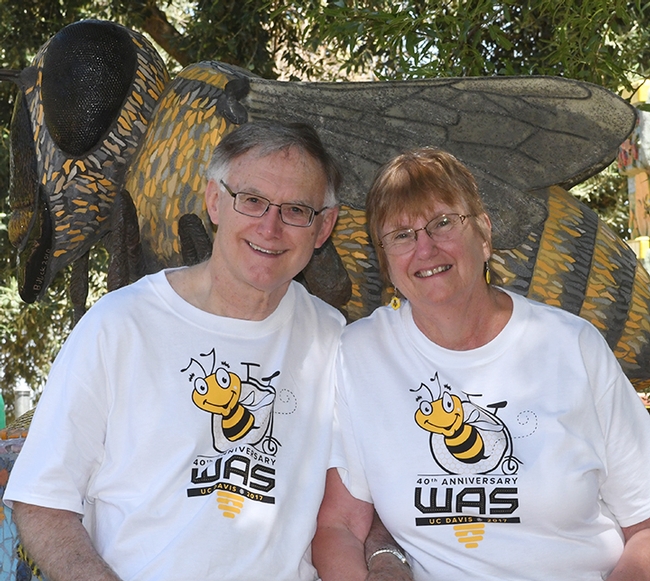
- Author: Kathy Keatley Garvey

So true.
For her news story, reporter Jenny Starrs interviewed "Bee Detective" Jay Freeman of the Butte County Sheriff's Office (he's a detective all year long but a "bee detective" during almond pollination season and he also keeps bees).
"At the start of pollination season in 2010, the average hive cost $130 to rent," Starrs wrote. "Rental fees are $200 this year, and will continue going up as hives continue to die off. The industry is becoming increasingly volatile, increasingly expensive and thus, increasingly criminalized."
In past years, we remember hearing about several hives stolen here, several hives stolen there, and a few more over there. But now bee hive thievery is rampant. Detective Freeman reported hundreds of hives stolen and cited the numbers: 240 from an operation in Colusa County, 64 from an operation in Butte, 280 in Sutter County...the list seems endless.
The California State Beekeepers' Association has now set up Bee Theft Alerts on its web page.
It's good to see that the CSBA is offering a reward up to $10,000 for the arrest and conviction of persons stealing CSBA members' bees or equipment. CSBA is also encouraging beekeepers to report the thefts, no matter how small.
It's working. The Butte County Sheriff's Office arrested a suspect Feb. 6 and charged him with stealing 64 bee hives from Olivarez Honey Bees Inc. in Chico and trucking them to a Stanislaus County almond orchard.
Extension apiculturist emeritus Eric Mussen of the UC Davis Department of Entomology and Nematology--his career spanned 38 years--told us last week that apparently beekeepers or people with beekeeping knowledge are stealing the hives. "Maybe they used to work for some of these beekeeping operations, and know where the hives are," he said. So, in the dead of the night, the thieves are moving in the big trucks and forklifts, hauling them away, and then renting them to unsuspecting almond growers. The culprits pocket the money and never return for "their" colonies.
“Most people, when they lose their hives, figure they're never going to get found,” California State Beekeepers' Association media director Joy Pendell told Starrs. “It's very frustrating for us, because we go all winter without any income. So we put all this money and work into them for months, and we're about to have our payday and someone just goes and steals it.”
The Bee Culture journal, edited by Kim Flottom, has also sounded the alert.
"If you have had any hives stolen within the last couple years, please email Joy Pendell directly at jpendell11@gmail.com with brand numbers, a description and pictures," Flottum wrote. "The California State Beekeepers would like to create a complete history of hive theft in our industry to share with law enforcement and interested media outlets. If you know of a theft victim who is not a CSBA member, please pass along this information so they can report as well. The CSBA represents the interests of all California beekeepers plus they would like to create a summary of bee theft both inside and outside of our organization."
At a recent meeting of the California Bee Breeders' Association that we attended in Ordbend, Glenn County, members talked about stepping up patrols and recruiting volunteers to monitor remote areas at night and early morning.
Just call it "The Sting" operation.
Unfortunately, all this bee thievery may worsen. Gordy Wardell recently reported in the Project Apis m newsletter that California's total number of almond acreage is now at 1 million.
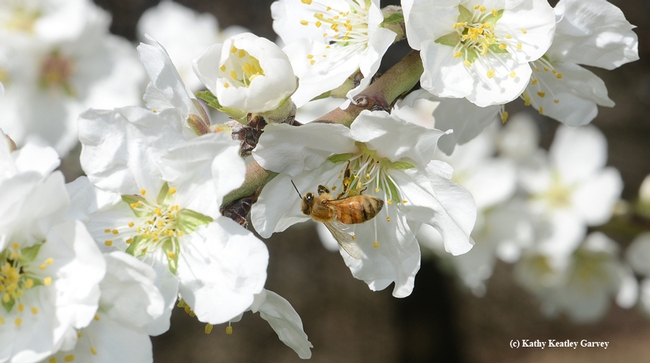
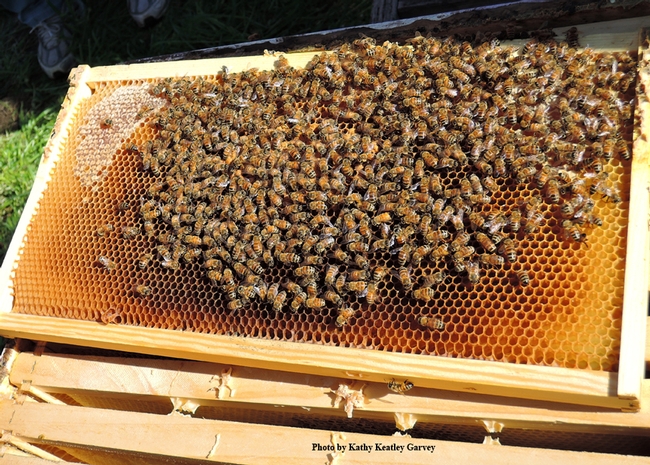
- Author: Kathy Keatley Garvey

Make way for the Good Food Awards competition, opening July 6.
This year is the second consecutive year for the honey category. Last year more than 50 beekeepers from throughout the United States entered their honey.
Amina Harris, director of the UC Davis Honey and Pollination Center, Robert Mondavi Institute for Wine and Food Science, is chairing the committee. She's joined by fellow members Emily Brown, owner of AZ Queen Bee and winner of a 2014 Good Food Award in Honey; Kim Flottum, editor of Bee Culture magazine; Marina Marchese, founder of the American Honey Tasting Society and co-author (with Kim Flottum) of The Honey Connoisseur; and Mea McNeil, writer, beekeeper and organic farmer.
Here's what Harris advises:
- Put July 6, 2015 (sometime in the afternoon) on your calendar
- Go to the website: http://www.goodfoodawards.org/
- Click on the ‘Honey' link to read the NEW criteria (also listed below)
- Click on Entrant Information to download a form.
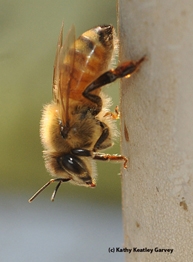
So, what are the rules? Among them:
- All honey must be the bona fide produce of the entrant's own bees.
- It must be harvested between August 2014 – August 2015.
- It must be extracted with minimal heat (100°) and after extraction, not exposed to heat greater than 120°.
- It must be strained and/or filtered to leave in pollen.
- It can be made with inclusions (such as fruit, alcohol and herbs):
- That grow domestically, inclusions are locally sourced wherever possible; traceable; and grown without synthetic herbicides, pesticides, fungicides or fertilizers.
- That are not grown domestically on a commercial scale; they are farm-direct, certified organic, or Fair Trade certified.
- It must be produced in the United States
There are other rules as well, including being responsibly reproduced.
Is honey the nectar of the gods? Or the soul of a field of flowers? Both. How many flowers must honey bees tap to make one pound of honey? Two million, according to the National Honey Board. The average worker honey bee makes only 1/12 of a teaspoon in her lifetime. How long have bees been producing honey from flowering plants? 10-20 million years. How many flowers does a honey bee visit during one collection trip? 50-100. See more questions here.
The Good Food Awards, according to its website, is all about celebrating "tasty, authentic and responsibly produced foods." The organization presents the awards at the Ferry Building in San Francisco. This year, the sixth annual, will include 13 categories: beer, cider, charcuterie, cheese, chocolate, coffee, confections, honey, pickles, preserves, spirits, oil and the newest category, pantry. Awards will be given to producers and their food communities from each of five regions of the U.S.
Meanwhile, Amina Harris says we're tasting honey all wrong! Read the interview in Civil Eats.

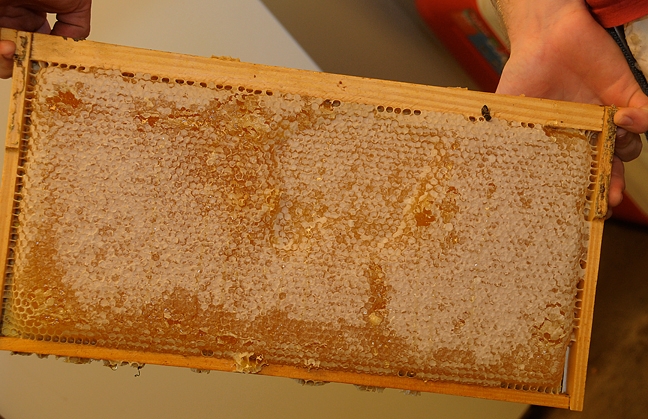
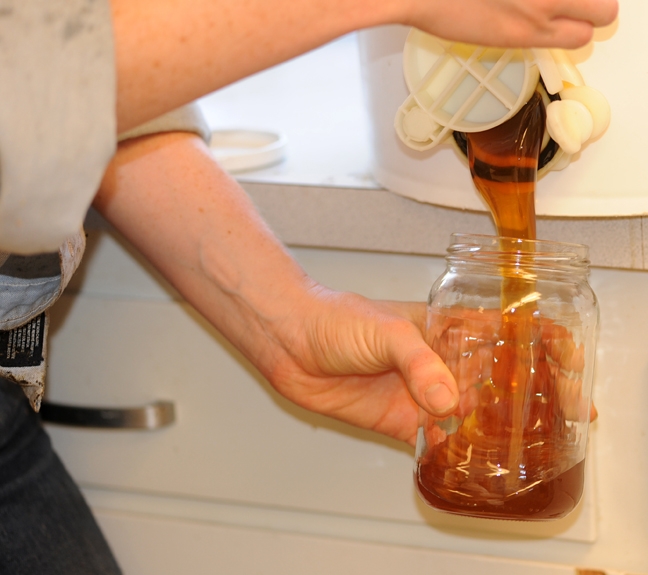
- Author: Kathy Keatley Garvey
When you encounter a "Golden Girl" in your backyard, there's one thing to do: grab the camera.
The "Golden Girl," in this case, is an Italian honey bee (Apis mellifera liguistica), the most common honey bee in the United States.
Make that the world.
"Package producers prefer Italian bees because they can start the rearing process early and raise lots of bees to sell," writes beekeeper-editor-author Kim Flottum in his book, The Backyard Beekeeper: An Absolute Beginner's Guide to Keeping Bees in Your Yard and Garden.
Flottum, editor of Bee Culture magazine, goes on to say that commercial beekeepers especially like this trait when it comes to their bees pollinating early-season crops like almonds.
Then, too, Italian honey bees "produce and store lots of honey when there is ample forage and good flying weather," he writes.
There's still another good reason why beekeepers prefer the Italians: "they are not markedly protective of their hive," Flottum says. "Italians are quiet on the comb when you remove and examine frames; they do not swarm excessively, and they do not produce great amounts of propolis."
As for photographers preferring the Italians, these "Golden Girls" just stand out more so than the Carniolans and Caucasians, two other popular races.

- Author: Kathy Keatley Garvey
Kim Flottum, editor of Bee Culture magazine, makes seven good points in his piece on honey bee health published in the Jan. 18th edition of The Daily Green.
Scientists, he writes, don't know what exactly causes colony collapse disorder (CCD), the mysterious phenomenon characterized by adult bees abandoning the hive, leaving behind the queen bee, brood and food stores.
But Flottum says, all this research on what ails them provides insight on what will help them. He lists seven key maladies that may be contributing to CCD.
One of them is poor nutrition.
"Honey bees forced to dine on only a single source of pollen have problems. Imagine living for a month on only Twinkies. The first one is great, the second good... the 123rd is disgusting, and, you are slowly starving to death. When researchers looked closely at the diet for our honey bees, they saw the problem and today--after four years--there are almost a dozen healthy food choices on the market we can feed our bees (including Megabee and Nozeivit, sold by Dadant; Ultra-Bee, sold by Mann Lake; and Feed Bee, sold by Ellingsons’s Inc.) That's progress. (But look at your grocery store and see how many kinds of dog food there are... wouldn't you think hard working honey bees should have the same choices?).
Flottum advocates diversity in the diet--and rightfully so.
"Make sure bees have a diverse and varied diet. Many floral sources are needed for a healthy, wholesome, season-long diet. And make sure those flowers have not been sprayed with the new insecticides and fungicides that are so detrimental to the young. And feeding bees is a good idea. Use one of the newer substitute diets available from the supply companies and feed whenever there's a food shortage or lack of variety. It will only help."
Check out the other six maladies contributing to a honey bee's poor health. We're all in this together, and together we can improve their health.
